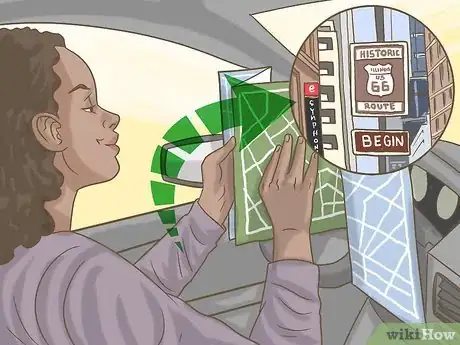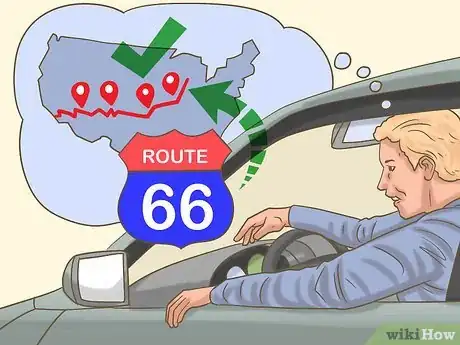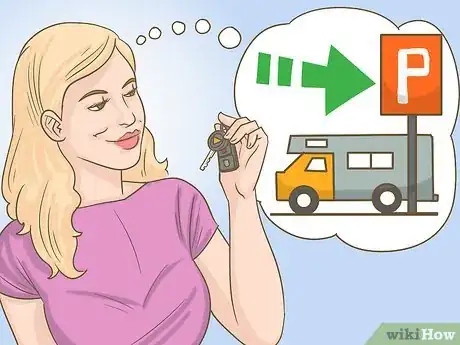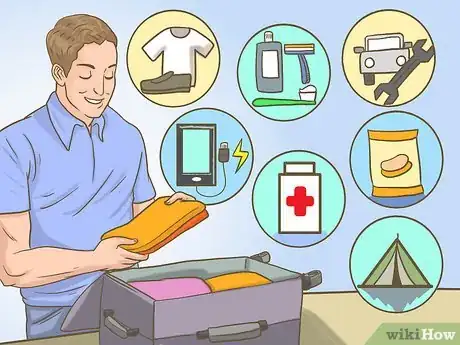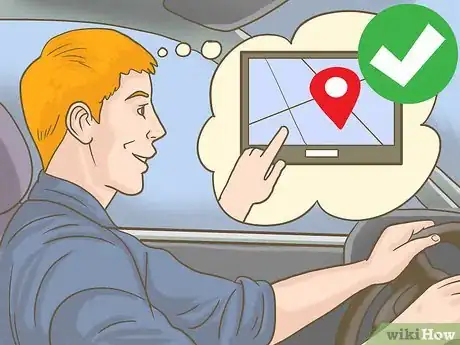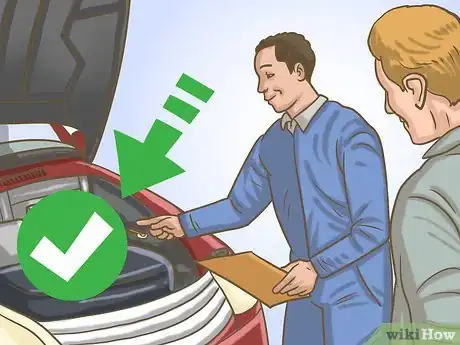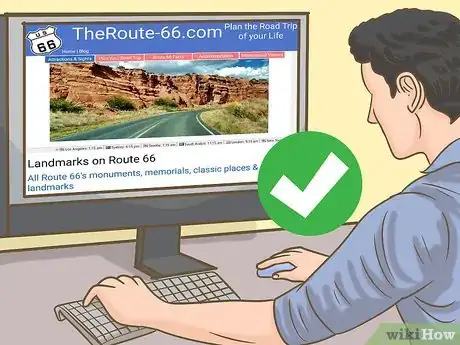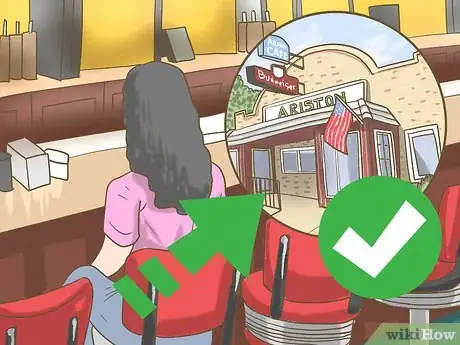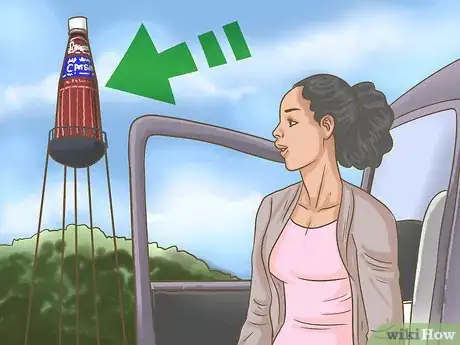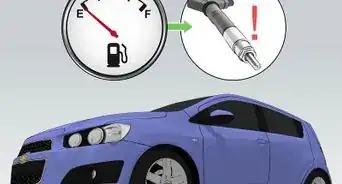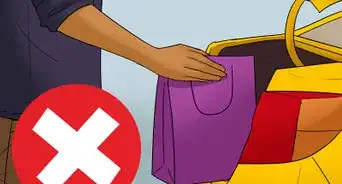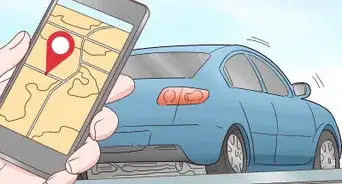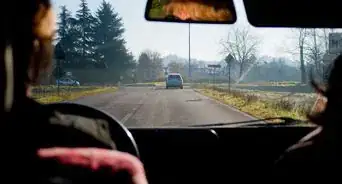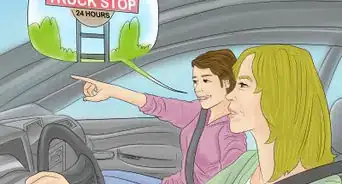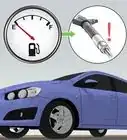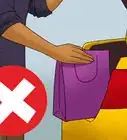This article was co-authored by Laura Krueger & Michelle Donson and by wikiHow staff writer, Sophia Latorre. Laura Krueger (right) and Michelle Donson (left) are Travel Specialists and the Founders of LM Media Worldwide, a free service that sources and negotiates contracts for hotel rooms and meeting space needs. With a combined 30 years of experience, they specialize in hospitality sales, contract and rate negotiations, room reservations, and wedding planning. Laura holds a BS in Business Management with High Honors from Rutgers University and has directed several sales teams, negotiated thousands of contracts, and consistently exceeded national sales goals for hotel chains such as Wyndham, Radisson, and Starwood. Michelle holds a BS in Hospitality Management from the University of Delaware and has worked in group sales and banqueting for Marriott and directed several sales teams with InterContinental Hotel Group, Wyndham, and Starwood. Michelle has also earned the prestigious “Salesperson of the Year” award twice consecutively for Wyndham Hotel Group’s national sales team. LM Media Worldwide is trusted by Kleinfeld Hotel Blocks, Marriott, Rosewood Hotels & Resorts, Melia Hotels & Resorts, Gaylord Hotels, Kimpton Hotels & Restaurants, Wyndham Hotel Group, and Mandarin Oriental Hotel Group.
There are 10 references cited in this article, which can be found at the bottom of the page.
This article has been viewed 23,283 times.
The legendary Route 66 is a vintage United States highway that stretches from Chicago, Illinois to Santa Monica, California. Though the United States government removed Route 66 from its official highway system in 1985, you can still travel on it to experience a small slice of classic American culture.
Steps
Planning Your Trip
-
1Schedule your trip during the spring or fall. Route 66 gets extremely hot during the summer, and portions of the road may become unsafe during the winter. For the most pleasant driving conditions, schedule your trip between March and early June or between September and November.[1]
- Oklahoma and Texas get a lot of tornados between late April and early June. If you travel during these times, make sure to keep an eye on local weather forecasts for any tornado warnings or watches.
-
2Begin in either Chicago or Santa Monica to travel the entire highway. If you want to travel the entire 2,451 mi (3,945 km) road, you’ll need to start in either Chicago, Illinois or Santa Monica, California. This will allow you to get the full Route 66 experience while traveling across the country.[2]
- If you are travelling in the spring, begin in California and make your way to Illinois. If you are travelling the the fall, start in Illinois and work your way to California. This should provide the most ideal weather conditions.
- Depending on how often you stop and how many places you explore, a one-way road trip from Chicago to Santa Monica (or vice versa) will take anywhere from 2 to 4 weeks.
- As a general guideline, plan to travel between 70 and 90 mi (110 and 140 km) a day if you want to stop and see everything.
Advertisement -
3Choose a city along the way for a shorter trip. If you only want to explore a portion of the classic highway, you can start in Missouri, the southeastern tip of Kansas, Oklahoma, the Texas panhandle, New Mexico, or Arizona. Choose a starting point based on its appeal or its proximity to your home.[3]
- Route 66 passes through a number of major cities including Oklahoma City, Tulsa, Amarillo, Flagstaff, Santa Fe, Albuquerque, and Los Angeles.
- Once you know your starting point, decide where you want to end your trip and plug the information into an online mapping service. Then, use the service’s distance estimate to determine how many days it will take you to complete your journey.[4]
-
4Drive a car or ride a motorcycle for the most authentic experience. Due to the road’s size, a car or motorcycle is the best way to experience Route 66. You’ll get a great view of all the sights and can stay at hotels or motels along the way. In some places, you may even be able to camp out![5]
- If you live in the United States, consider using your own vehicle for the trip. If you’re flying in from another country, or if your vehicle isn’t durable enough for the trip, you can rent a vehicle.
- If you only want to visit the major cities on Route 66, you can book a 14-day train trip.
-
5Expect to search for parking if you take an RV. Though you can take a large vehicle like an RV, certain parts of the road may be difficult to drive on as the road is narrow and winding in some areas. You’ll also have a harder time finding parking and RV campgrounds.
-
6Make lodging reservations 2-3 months in advance. Route 66 houses a number of unique hotels and motels, such as the famous Magnolia Hotel in St. Louis and the themed Mayo Hotel in Tulsa. These places fill up fast, so make room reservations 2-3 months beforehand if at all possible.[6]
- For a full list of Route 66 hotels and motels, visit https://www.theroute-66.com/hotels.html.
- If you’re travelling by RV, find and reserve campgrounds ahead of time.
- You can also check out tent campgrounds if you’re travelling by car or motorcycle and want to sleep under the stars.
-
7Make arrangements for your return trip. If you aren’t planning on driving both ways, decide how you’d like to get home. You can take the train or bus, or even book a flight, though you’ll have to pay to ship your vehicle home if you choose not to rent one for the trip.
- You may want to book a flight with free cancellation in case the trip takes more or less time than you anticipated.
- If you rent a vehicle to make the drive, choose a company that has a hub near the airport you plan to fly home from for your convenience.
-
8Create a travel budget. Before your trip, break down how much you expect to spend on gas, lodging, food, entertainment, and miscellaneous items like souvenirs. For things with specific rates, like gas and lodging, look up current pricing information online. For anything else, create a rough estimate based on how much you normally spend during vacations.[7]
- For a 1-way trip from Chicago to Santa Monica or vice versa, expect to spend a minimum of $300 on gas, $1,700 on lodging, $600 per person on food, and $200 per person on entertainment.
- Boost your final budget by 10-20% to account for unintended expenses, price hikes, and emergencies.
- Don’t forget to include the cost of the return trip!
Packing and Preparing
-
1Pack standard trip supplies. Before you head out, gather up all the day-to-day items you’ll need during your adventure. Even though you’ll have your vehicle with you, pack your things in bags and suitcases to keep everything neat and organized. To make sure you don’t forget anything, create a travel checklist that includes categories like:[8]
- Clothing and shoes
- Electronic devices and chargers
- Toiletries
- Prescription medications
- Car accessories
- Travel snacks
- Camping gear, if applicable
-
2Buy navigational materials if necessary. Nowadays, most people travel using the map program built into their phone. If you plan on doing this, pack a car charger and make sure to check your phone’s navigational abilities before you leave. If you do not have this option, make sure to purchase a stand-alone GPS or road map to help you navigate during the trip.[9]
- Even if you have a smartphone, consider purchasing a backup GPS in case your device malfunctions or breaks.
-
3Get an inspection if you’re taking your own vehicle. If you plan on using your own vehicle for the trip, make sure you take it to a licensed mechanic beforehand. Ask for a full vehicle inspection to ensure your engine and tires are fit for the journey. If necessary, pay for repairs or a tune up so you don’t break down on the road.
- Before your trip, double-check to make sure you have all your car’s insurance paperwork.
-
4Place emergency gear in your vehicle. Route 66 is a long, winding road that features lots of driving hazards and dead spots, meaning there’s plenty of room for things to go south. Make sure to pack items like:[10]
- A first-aid kit
- A flashlight
- Emergency blankets
- Jumper cables
- A spare tire
- Automotive tools
Enjoying the Adventure
-
1Stop at famous shops and attractions. Route 66 is perhaps most well known for its wide variety of antique tradings posts, vintage entertainment venues, and weird tourist attractions. For a state by state breakdown of interesting places to stop, visit https://www.theroute-66.com/landmarks.html. Some of the route’s most popular landmarks include the:[11]
- Route 66 Museum
- Cadillac Ranch
- 66 Drive-In Theater
- Gillioz Theatre
- Old Riverton Store
- Twin Arrows Trading Post
- World's Largest Catsup Bottle
- World's Largest Totem Pole
-
2Eat at vintage restaurants and cafés. Route 66 hosts a number of unique cafés, diners, and other restaurants along its winding roads. Most of these places feature classic American dishes and theming, and some of them have even been around since the road’s inception in the 1920s. A few of the most popular restaurants on Route 66 include the:[12]
- Ariston Café
- Bagdad Café
- Circle Inn Malt Shop
- Midpoint Café
- Pops 66
- Rock Café
- Wagon Wheel Motel, Café and Station
-
3Take detours to see natural and historic landmarks. Along with the many attractions located on the road itself, Route 66 sits near a wide variety of national parks, important landmarks, and historic districts. You’ll have to change course slightly to reach these places, but they’re well worth the detour. Some popular parks and historic sites near Route 66 include the:[13]
- Grand Canyon National Park
- The Blue Whale of Catoosa
- Gateway Arch National Park
- Cadillac Ranch
- Oatman, Arizona
- Santa Monica Pier and Carousel
- Petrified Forest National Park
- Abraham Lincoln’s Tomb
- Painted Desert National Park
-
4Stop anywhere that seems interesting to you. The beauty of taking a road trip is discovering interesting things along the way! During your journey, keep your eyes peeled for small, unique places that don’t show up in the guides. Odds are good you’ll find a fun store, restaurant, or attraction that’s well worth your time.
- These places may not have the same advertising budget as well-known establishments, so look for small, hand-crafted road signs instead of big, flashy ones.
Community Q&A
-
QuestionAre there many gas stations on route 66?
 Community AnswerRoute 66 is partially on an Interstate Highway, and partially it is not. So you can find gas stations in small towns and off interstate portions of the road.
Community AnswerRoute 66 is partially on an Interstate Highway, and partially it is not. So you can find gas stations in small towns and off interstate portions of the road.
References
- ↑ https://www.national66.org/tips-for-driving-route-66/
- ↑ https://roadtripusa.com/route-66/
- ↑ https://www.theroute-66.com/towns.html
- ↑ https://www.national66.org/tips-for-driving-route-66/
- ↑ https://www.national66.org/tips-for-driving-route-66/
- ↑ https://www.theroute-66.com/hotels.html
- ↑ https://money.com/route-66-epic-trip-cost/
- ↑ https://www.theroute-66.com/tips.html
- ↑ https://www.theroute-66.com/tips.html
- ↑ https://www.dmv.org/how-to-guides/emergency-kit.php
- ↑ https://www.theroute-66.com/landmarks.html
- ↑ https://www.theroute-66.com/state.html
- ↑ Laura Krueger & Michelle Donson. Travel Specialists. Expert Interview. 30 September 2020.
About This Article
To get the most out of your Route 66 experience, make sure you stop at shops like the Twin Arrows Trading Post, entertainment venues like the 66 Drive-In, and attractions like the Cadillac Ranch. When you’re ready for a bite, take a break at unique restaurants such as the Bagdad Café or Pops 66. If you’re willing to go off the main road, you can visit nature parks like the Petrified Forest or historic landmarks like the Lincoln Tomb. For tips on how to plan your trip, or to learn what supplies you’ll need for your journey, keep reading!

